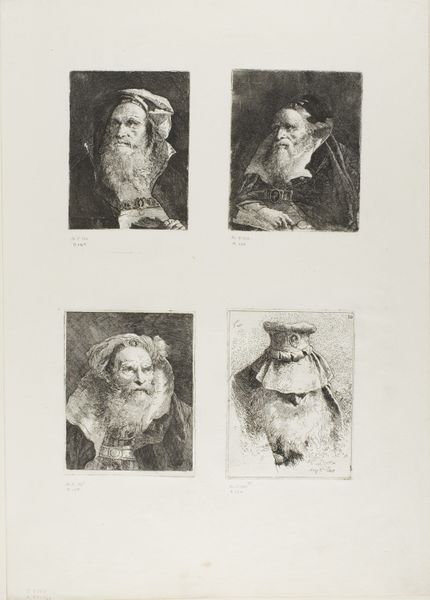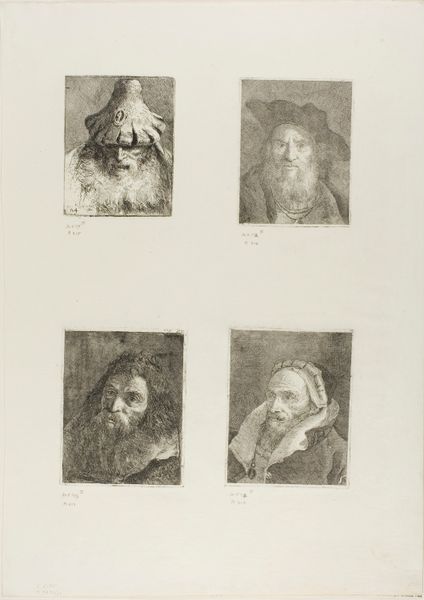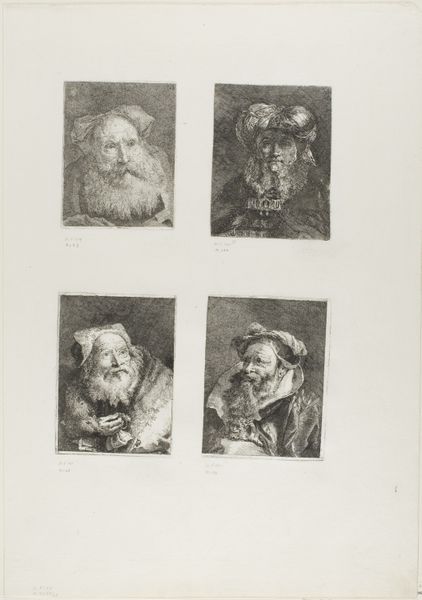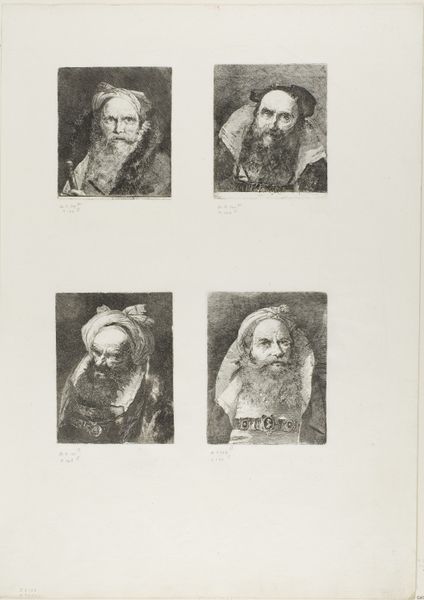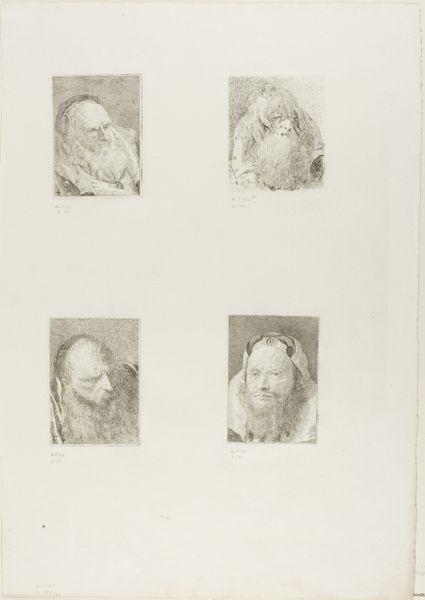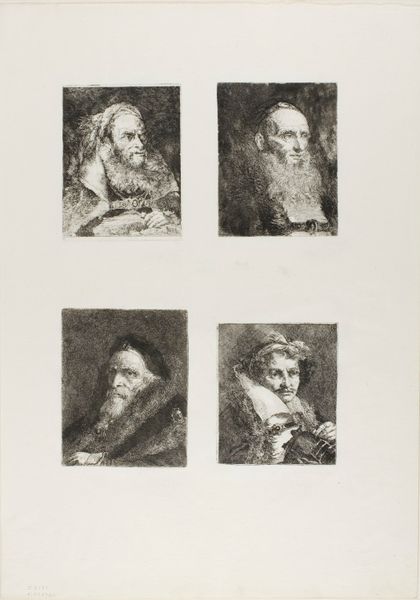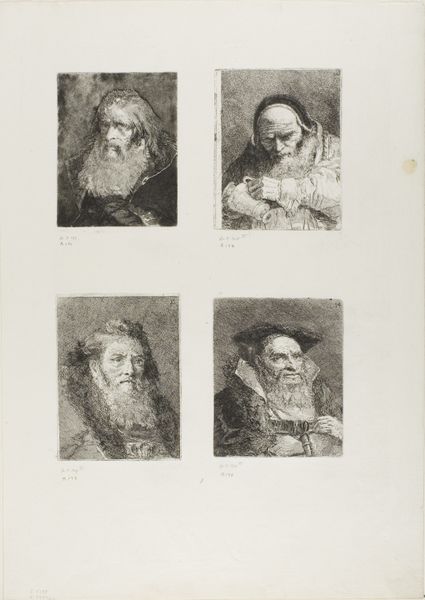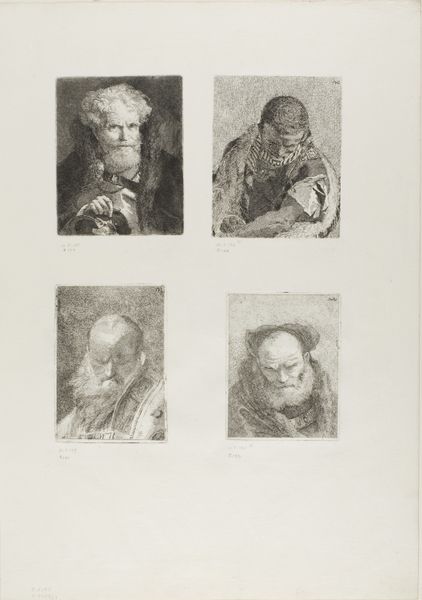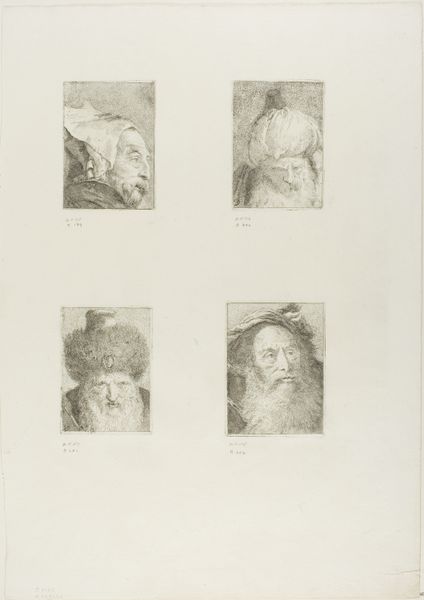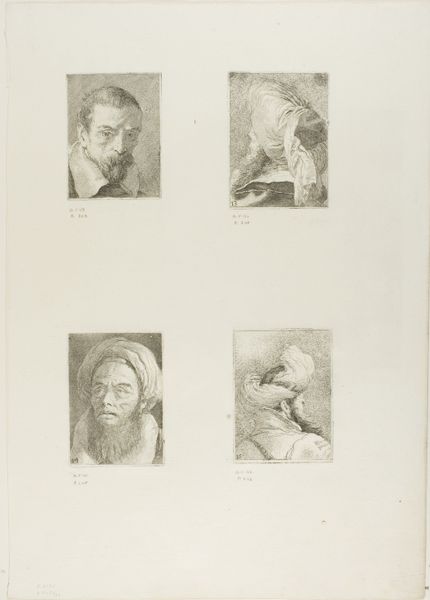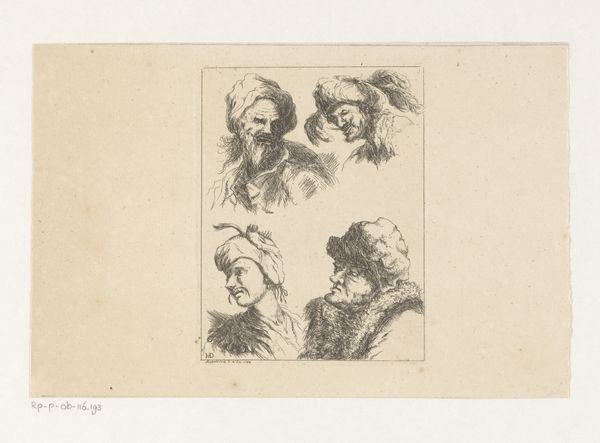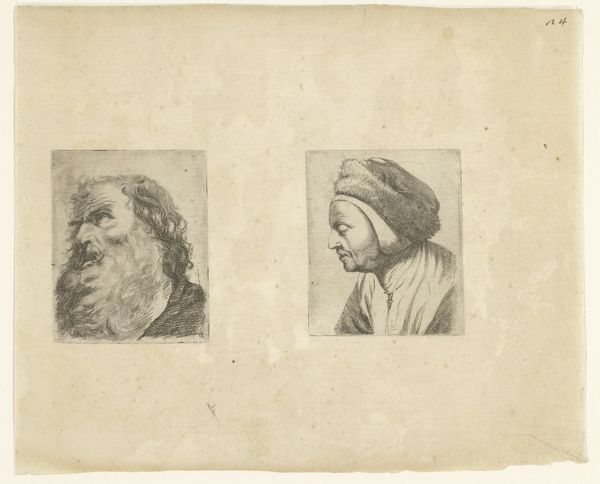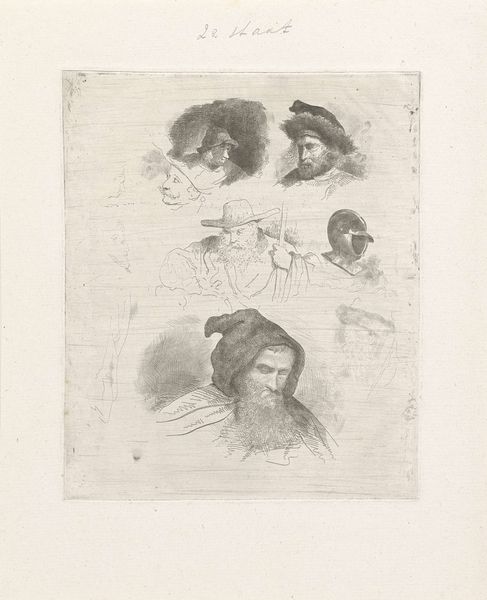
Old Man with a Book, Old Man with His Hat on His Forehead, The Mathematician, Old Man with a Beard 1775
0:00
0:00
drawing, print, etching, paper
#
portrait
#
drawing
# print
#
etching
#
paper
Dimensions: 141 × 112 mm (image/plate, upper left); 142 × 109 mm (image, upper right); 145 × 109 mm (plate, upper right); 150 × 120 mm (image, lower left); 152 × 120 mm (plate, lower left); 150 × 122 mm (image/plate, lower right); 545 × 385 mm (sheet)
Copyright: Public Domain
Editor: Here we have "Old Man with a Book, Old Man with His Hat on His Forehead, The Mathematician, Old Man with a Beard," an etching on paper made around 1775 by Giovanni Domenico Tiepolo. I'm immediately struck by the variations in texture created by the etching technique – the way the light catches the lines. What does this print say to you? Curator: I'm interested in Tiepolo's engagement with printmaking here. Etching, unlike painting, allows for reproducibility and wider circulation. Consider the labor involved – the precise control over the acid-etching process, the physicality of the plate. Was Tiepolo aiming for an elevated status for these studies, or were they meant to be more democratic in terms of accessibility and price? What impact do you think that might have on the status afforded them? Editor: That's a good point; the creation is indeed accessible to a wider audience than painting might allow. How does this challenge the idea of art as unique and precious? Curator: Precisely. These are reproducible images, circulating within a market economy. Look at the different costumes. They seem quite deliberate, like character studies. To what extent are these observations tied to existing social structures? Could these be interpreted as commentary on profession or class through readily available printed media? Editor: So you're suggesting that the choice of etching and these depictions may engage with social realities concerning labor and accessibility? I had just seen it as studies on "old age" or "philosophy." Curator: In a way, yes. Tiepolo doesn't simply present "old age." He presents distinct modes of being – intellectual pursuits, perhaps leisure, and the markers thereof via their costume. By rendering them in a reproducible form, he places them within the social fabric of consumption and distribution. These aren’t precious single instances, they’re accessible expressions available in a commercial format. Editor: That's made me consider the social context and dissemination much more than their artistic value alone. I will now examine Tiepolo's process in more detail. Thank you! Curator: And I, the ways viewers react to and contextualize such widely reproducible pieces like this.
Comments
No comments
Be the first to comment and join the conversation on the ultimate creative platform.
